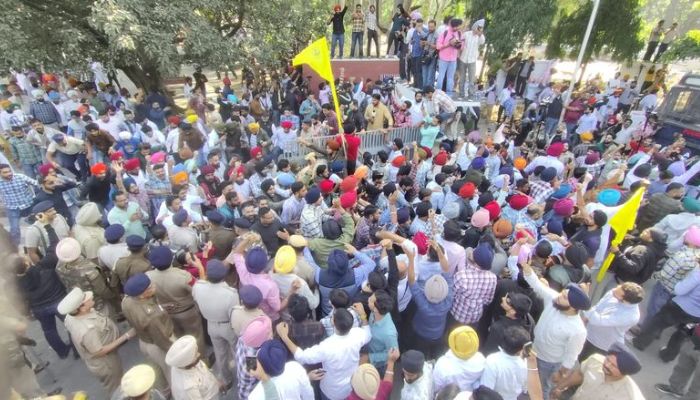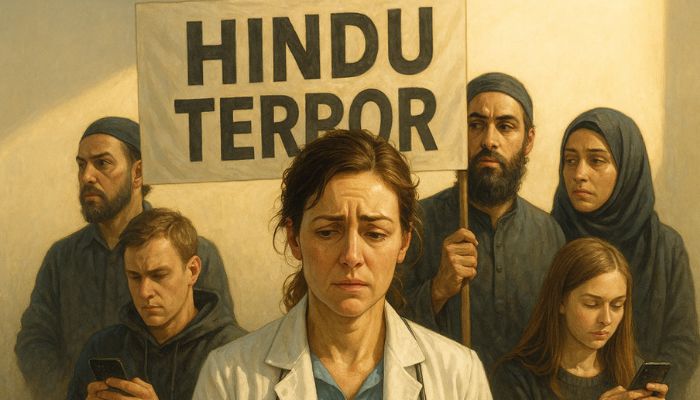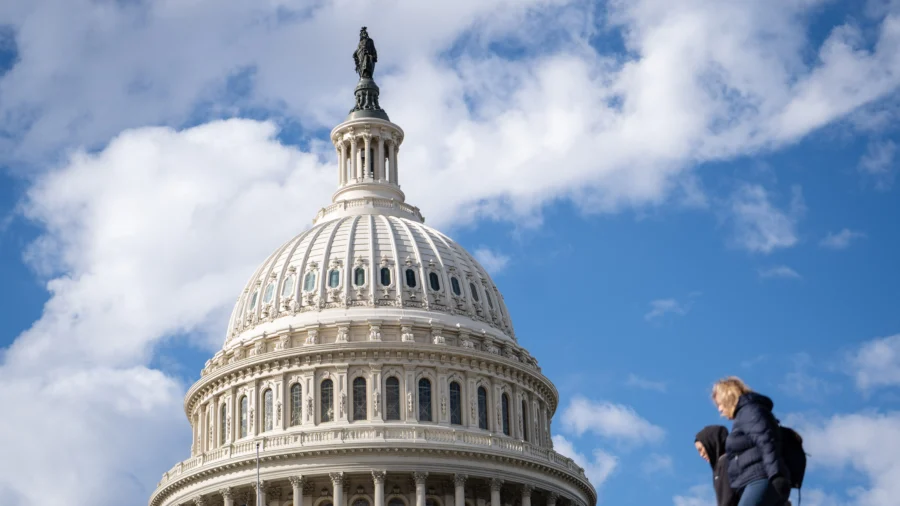Is the simple student demand for Senate elections at Panjab University being hijacked by political groups, unions and identity factions?
On 16th November, when OpIndia visited Panjab University in Chandigarh, the scene on the ground did not match the feverish noise that has been doing the rounds on social media. Inside the campus, many students were sitting calmly at the protest site, repeating the same, simple demand, that is, announce the Senate election schedule. The students with whom OpIndia talked wanted to return to classes as soon as the dates are announced and resume their studies. The worry of missing important coursework was visible on their faces. The students at Panjab University wanted clarity, not chaos. One student, Avtar Singh, made it extremely clear that the strike would end the moment the schedule was announced. He said the students knew it takes over 200 days to conduct Senate elections, and none of them were asking for an overnight miracle. They wanted the process to begin, which indeed has already begun as announced by the university a few days ago. However, step outside the inner circle of students, and the scene changed completely. There were tractors, langar vehicles, loudspeakers (though they were quiet when we visited), political banners, farm union flags and groups that ideally had nothing to do with the university’s internal governance. Those groups and people, who called themselves union members, politicians and activists, had taken over the space that belonged exclusively to the university students, current or former. Source: OpIndia On Ground Reporter Just like what happened during the farmer protests, where farmers’ legitimate issues were drowned under political opportunism and identity mobilisation, the peaceful demand for Senate polls has now been dragged into a state vs Centre confrontation. And predictably, the loudest voices in this new swirl were not students, but those who piggybacked on the students’ protests for their own agendas. From the moment the gates were broken on 10th November, it became clear that outsiders had come with their own agendas. The FIR itself documents that the crowd that forced open Gate No 1 had a large number of non-students. Police officials said in statements that while some PU students were at the front, the barrier breaking and pushing largely came from people who had nothing to do with the university. And yet, these very clashes are being projected as the natural consequence of the Senate issue. They are not. They are the result of opportunistic hijacking, and the students themselves know it. Speaking to Times of India, even Vice Chancellor of Panjab University, Renu Vig, said that students admit it is no longer about senate. She said, “They haven’t said this directly to me, but through wardens and committee, students have conveyed a sense of helplessness.” What the students actually want, and how fear is being seeded among them If we look beyond the slogans, the political speeches, the farm union theatrics and the social media noise, the demands of the students are very clear. They want the Senate restored through elections. They want a legitimate governing body as defined by the Panjab University Act. And they want the uncertainty of the past one year to end. That is all. They are not the ones who raised the demands about Chandigarh’s ownership. They are not demanding identity-based claim over the university. They are not shouting about federalism. They are not asking the Centre to pack its bags and leave the Union Territory. From the discussion OpIndia had with the people present at the protest site, it was evident that the students want clarity on Senate and want to go back to their classes as soon as possible. While the protests are against the Central Government’s decision to make Senate membership nomination based, a notification that has already been taken back by the Union Government, they are not against the Centre per se. They just want clarity about their future. We noticed that a parallel campaign is being run within the campus to make students believe that the moment the Centre “takes control” of the Senate, the university will become a dictatorship, fees will be raised, and Punjab will lose the institution permanently. These exact lines were repeated to us by people who were not students but were present at the site. The fear is being manufactured. It is not organic. And it serves the political groups that have descended on the campus far more than it serves the students. There are whispers that the notification was an attempt by the Central Government to “snatch” the university from the state. The situation, which should have been resolved on the day the Central Government revoked the notification, somehow has turned into an existential threat. The confusion, well, is not accidental. It mirrors what we saw during the farmer protests, where several groups ran parallel narratives of fear, identity and distrust. The farmer protests created a deep valley between the farmers and the union. The original issues drowned und



On 16th November, when OpIndia visited Panjab University in Chandigarh, the scene on the ground did not match the feverish noise that has been doing the rounds on social media. Inside the campus, many students were sitting calmly at the protest site, repeating the same, simple demand, that is, announce the Senate election schedule. The students with whom OpIndia talked wanted to return to classes as soon as the dates are announced and resume their studies. The worry of missing important coursework was visible on their faces. The students at Panjab University wanted clarity, not chaos.
One student, Avtar Singh, made it extremely clear that the strike would end the moment the schedule was announced. He said the students knew it takes over 200 days to conduct Senate elections, and none of them were asking for an overnight miracle. They wanted the process to begin, which indeed has already begun as announced by the university a few days ago.
However, step outside the inner circle of students, and the scene changed completely. There were tractors, langar vehicles, loudspeakers (though they were quiet when we visited), political banners, farm union flags and groups that ideally had nothing to do with the university’s internal governance. Those groups and people, who called themselves union members, politicians and activists, had taken over the space that belonged exclusively to the university students, current or former.
Just like what happened during the farmer protests, where farmers’ legitimate issues were drowned under political opportunism and identity mobilisation, the peaceful demand for Senate polls has now been dragged into a state vs Centre confrontation. And predictably, the loudest voices in this new swirl were not students, but those who piggybacked on the students’ protests for their own agendas.
From the moment the gates were broken on 10th November, it became clear that outsiders had come with their own agendas. The FIR itself documents that the crowd that forced open Gate No 1 had a large number of non-students. Police officials said in statements that while some PU students were at the front, the barrier breaking and pushing largely came from people who had nothing to do with the university. And yet, these very clashes are being projected as the natural consequence of the Senate issue. They are not. They are the result of opportunistic hijacking, and the students themselves know it.
Speaking to Times of India, even Vice Chancellor of Panjab University, Renu Vig, said that students admit it is no longer about senate. She said, “They haven’t said this directly to me, but through wardens and committee, students have conveyed a sense of helplessness.”
What the students actually want, and how fear is being seeded among them
If we look beyond the slogans, the political speeches, the farm union theatrics and the social media noise, the demands of the students are very clear. They want the Senate restored through elections. They want a legitimate governing body as defined by the Panjab University Act. And they want the uncertainty of the past one year to end. That is all. They are not the ones who raised the demands about Chandigarh’s ownership. They are not demanding identity-based claim over the university. They are not shouting about federalism. They are not asking the Centre to pack its bags and leave the Union Territory.
From the discussion OpIndia had with the people present at the protest site, it was evident that the students want clarity on Senate and want to go back to their classes as soon as possible. While the protests are against the Central Government’s decision to make Senate membership nomination based, a notification that has already been taken back by the Union Government, they are not against the Centre per se. They just want clarity about their future.
We noticed that a parallel campaign is being run within the campus to make students believe that the moment the Centre “takes control” of the Senate, the university will become a dictatorship, fees will be raised, and Punjab will lose the institution permanently. These exact lines were repeated to us by people who were not students but were present at the site. The fear is being manufactured. It is not organic. And it serves the political groups that have descended on the campus far more than it serves the students.
There are whispers that the notification was an attempt by the Central Government to “snatch” the university from the state. The situation, which should have been resolved on the day the Central Government revoked the notification, somehow has turned into an existential threat. The confusion, well, is not accidental.
It mirrors what we saw during the farmer protests, where several groups ran parallel narratives of fear, identity and distrust. The farmer protests created a deep valley between the farmers and the union. The original issues drowned under unrelated agendas. Here too, Punjabiyat, centre vs state politics, regional identity, and even religious identity narratives are being piggybacked on a student demand for internal university elections.
What are the Senate and the Syndicate?
The Senate and the Syndicate are the two statutory governing bodies of Panjab University. The Senate is the supreme authority, comprising over one hundred members, including elected graduates, professors, student representatives and nominees of the Centre and the state. It frames policies, approves budgets, oversees appointments and takes major academic and administrative decisions. The Syndicate functions as the executive body with around fifteen to twenty members. While the Senate takes decisions, the Syndicate implements them.
How political unions, kisan groups and majdoor organisations hijacked the protest
If anyone still believes that this is purely student driven protests, they have not been to the Panjab University Bachao Morcha protest site in the past few days. When OpIndia reached the campus, there were tractors, langar stalls, political posters and non-students all around the protest site.
This pattern is not unfamiliar. We saw it during the farmer protests as well. A specific set of actors specialise in identifying a legitimate grievance, stepping into the scene under the guise of “support”, and then shifting both the tone and direction of the movement until the original issue becomes unrecognisable. That is precisely what happened here.
What began as a Senate election demand slowly turned into:
- A Punjab versus Centre issue
- Punjab versus Haryana
- Identity ownership of Chandigarh
- Slogans of Punjabiyat
- Political parties arriving in batches
During the clash between the outsider protesters and police on 10th November, SSP Kanwardeep Kaur climbed atop the gate and tried to reason with the crowd as the number of outsiders trying to enter was simply too large for the police to contain without escalating force. The gates were brought down by the protesters and a wave entered the campus. That day, tractors, trolleys, union representatives, political workers, and people carrying flags of organisations that have no stake in the university’s governance entered the campus.
Ideally, neither police nor outsider groups, organisations and individuals have a say in such protests and they are supposed to stay outside. However, things did not happen the way they should have.
Senior leaders of AAP, Congress and SAD chief Sukhbir Singh Badal showed up. Farmer union chiefs like Balbir Singh Rajewal, Harinder Lakhowal and Inderpal Bains arrived with cadres. Even the father of jailed MP Amritpal Singh and family members of historical radical figures reached the campus.
Figures like Lakha Sidhana, a gangster-turned-activist, singer Satinder Sartaj and many others visited the campus. The actual student leaders who should have been the voice of the protests the whole time were pushed aside so that these leaders could speak on the stage.
This infiltration brought with it an entirely different vocabulary. Slogans like “Chandigarh Punjab da” and “Raj Karega Khalsa” filled the air. These slogans have nothing to do with Senate elections, nothing to do with the Panjab University Act, and nothing to do with restoring democratic bodies. But they have everything to do with political positioning, identity signalling and creating the impression that the university belongs to a specific cultural group rather than to all of its students and stakeholders.
In the middle of this noise, the original student-led demand was almost lost. What the political players want from these protests is vastly different from what the students want. And the gap between those two agendas is what is causing the chaos.
The Nihang presence and the subtle introduction of pro Khalistani rhetoric
Among the many groups that appeared on campus that day were Nihangs. OpIndia spoke to one of the Nihangs present during the agitation. On the surface, he insisted they were there only to support the “children”. He repeatedly framed their presence as protective, even paternal. But during that conversation, he introduced a line that revealed a deeper undercurrent that has nothing to do with Senate elections.
He said, and we quote nearly verbatim, “When Hindus talk about making India a Hindu Rashtra, no one says anything. But when others demand something, it becomes a problem.”
He did not explicitly use the word “Khalistan”, but he did not need to. Anyone who has covered Punjab long enough understands exactly what “others demand something” implies in this context. It is coded language, used often by those who want to push separatist narratives without directly triggering legal scrutiny.
This is where the protest crosses into dangerous territory, far beyond elections and campus democracy. When individuals representing Nihang groups begin using unrelated national comparisons and subtly pushing identity-based grievances inside a university movement, it means the protest has become a vessel for wider ideological messaging.
The students leading the Senate movement categorically denied inviting any political party or union to the protests. But the moment the gates were forced open and external groups poured in, the space was no longer in the students’ control. The protest had become porous. And once that happens, narratives that have nothing to do with the issue at hand enter quietly, disguised as “support”. The students we talked to said these groups “should be present” as they support them, however, there were some voices who were confused, and even disliked the students’ movement being hijacked.
For instance, Hindustan Student Association (HSA) officials categorically refused to side with separatist slogans and claims of Punjab over the university.
Cracks within the Morcha as the Punjab versus Haryana narrative takes over
While the political circus grew louder outside the gates, the first real sign of discomfort came from within the Panjab University Bachao Morcha itself. On 12th November, Mohit Manderana, joint secretary of the PU Campus Students’ Council and one of the prominent faces of the earlier affidavit campaign, resigned from the Morcha. His resignation is a crucial marker because it signals what many students are whispering privately but are too afraid to say publicly, the movement has drifted far away from its purpose.
However, he did not step away from spreading fear of “BJP and RSS ideology”. In a statement, he said, “The struggle was meant to save Panjab University from political interference, especially from BJP and RSS ideology. But the November 10 protest became about regional ownership, not about saving the university.” His statement shows how fearmongering is being done from all channels possible.
In a video, he was seen saying it is a personal matter of “Punjab and Haryana” and they will resolve it at home. “We don’t need a Delhi agent,” he said.
On the other hand, a couple of students talked to OpIndia on condition of anonymity and said they were deeply uncomfortable with the explosions of “Chandigarh Punjab da” chants, the entry of leaders who had nothing to do with Senate elections, and the sudden flood of content online claiming that Haryana wanted to “capture” the university.
Notably, this Punjab versus Haryana narrative is not new. Since reorganisation of Punjab in 1966 that led to the formation of Haryana and Himachal Pradesh, this tussle between the states has been prominent but it did not enter the university campus the way it has entered now.
The Senate elections have never historically been reduced to a territorial fight. Students from both states have studied together for decades. Haryana has its own universities and does not fund PU. Himachal has its own institutions too. The governance issue was administrative, not regional.
But once political players entered the scene, it became convenient to push a narrative of “Punjab’s last symbol under attack”. The Senate issue gave way to slogans about land, identity and history. Predictably, Haryana based student groups responded, and the protest became a battleground for sentiments rather than statutes.
Manderana’s resignation was therefore more than a disagreement. It was the first visible rupture caused by this hijacking. And if insiders are not aligned, it is only a matter of time before students reclaim their space or the protest collapses under its own weight.
ABVP’s position on the ongoing protests
Akhil Bhartiya Vidyarthi Parishad (ABVP) Panjab University president Pavindra Singh Negi told OpIndia that while ABVP stands with the students and supports their genuine demand for the Senate election schedule, the organisation is not actively participating in the protests because they have been hijacked by outsiders. He said the government has already withdrawn the notification and even the High Court has asked students to return to classes, leaving little reason for continued agitation.
According to him, it is now outsiders who are turning the protests into something entirely different to suit their own agendas. He also expressed concerns over the postponed exams as it will delay results and create problems in placement. He said, “Students met us today as well. They were concerned over postponed exams. How will they match the placement dates if results are not out on time?” he questioned.
How fear is being manufactured among students, and who benefits from it
Fear is a powerful political tool, especially when injected into a young student population that is already living in academic uncertainty. Over the last week, a very specific set of fears has been deliberately circulated among students:
- That a central takeover will bring dictatorship
- That fees will skyrocket
- That elections will never take place
- That PU will be “snatched away” from Punjab
- That Chandigarh will be altered permanently
- That Punjab’s identity is under assault
- That this is the “last chance to save the university”
- Every one of these fears is factually questionable, but politically convenient.
These narratives did not originate inside hostels or classrooms. They came from outside, from farm union leaders who arrived with speeches loaded with emotion, from identity groups repeating the Punjabiyat slogan cycle, from political leaders hunting for a new anti-Centre flashpoint, and from ideological elements who saw the protest as a fresh battlefield for grievances that have nothing to do with Panjab University.
When I asked one of the “supporters”, a well-versed legal aide, to explain how fees would be increased as other central universities also have very affordable fee structure, he could only explain it by saying “it happens like this only, doesn’t it”?
But fear spreads faster than facts, especially when thousands of people are standing outside a university shouting that “Punjab’s last institution is being taken away”.
It is important to underline that the Ministry of Education withdrew the contentious notification on 7th November. The Senate structure was restored. The university sent the schedule to the Vice President’s office on 9th November. Even the High Court acknowledged that the schedule must be processed, and elections must be held expeditiously. Yet, for reasons that have little to do with the PU Act, several groups want the protests to continue.
Why? Because the chaos serves them.
What is happening is systematic emotional amplification. And every extra day of fear helps groups who have no interest in Senate elections but have immense interest in keeping the agitation alive.
The High Court’s intervention and how it punctures the fear narrative
On 14th November, the Punjab and Haryana High Court delivered what might be the most rational voice in this entire situation. While hearing a petition filed by former Senate members, the bench led by Chief Justice Sheel Nagu made two points that should have immediately calmed the campus, if only the agitators were actually interested in calming it.
First, the Court made it abundantly clear that academic activity must resume. The judges stated, plainly, that students are in university to study and that education should not be halted because of an administrative matter. When the counsel said students are protesting because Senate elections are delayed, the bench cut through the noise:
“Please go back to your classes.”
This is not a minor remark. A constitutional court telling students to attend classes undermines the entire hysteria being circulated that the university is on the brink of collapse or takeover.
Second, the Court stated that the elections must be held expeditiously and that the university has already sent the schedule to the Chancellor, the Vice President of India. The Court also noted that the Panjab University Act does not actually require the Chancellor’s “approval” for the schedule. This means the process is already in motion.
- The Additional Solicitor General representing the Centre confirmed that:
- The contentious notification has been withdrawn
- The government wants the elections held
- The schedule is being processed
- The exercise is massive, involving almost three and a half lakh registered graduate voters
He also emphasised the need for a “cordial atmosphere” for elections to proceed. This is common sense: no election of this scale can happen in the middle of barricade breaches, outsider mobilisation and political sloganeering.
In short, the High Court officially validated the students’ real demand that elections must happen and simultaneously dismissed the need for the chaos around it. The High Court’s words cut directly through the fear mongering spread by unions and political groups.
Why outsiders want the protest to continue, the political incentives at play
To understand why the protests ballooned far beyond the students’ original intent, you have to look at who benefits from keeping the campus in a state of unrest. And none of these beneficiaries are students.
Political parties
For parties like AAP, Congress and SAD, Panjab University is a convenient symbolic battlefield. With elections approaching and narratives shifting constantly, PU is being framed as the “last bastion of Punjab’s identity under threat”. The optics of marching through the campus, shouting slogans and attacking the Centre serve political mileage that has nothing to do with the Senate.
AAP ministers arrived. Congress MLAs gave emotional speeches. SAD leaders posed as defenders of Punjab. But where were these leaders when PU budgets were slashed, when hostels faced shortages, or when academic decisions were delayed? Their sudden affection for the university is more timed than sincere.
Farmer unions
After the splits within the Samyukta Kisan Morcha and dwindling mobilisation post 2021, several unions are eager to stay politically relevant. Backing student protests gives them the appearance of moral authority, even though Senate elections have nothing to do with agricultural issues.
This is why Punjab saw union leaders arriving with entire contingents in tractors and trolleys. The optics of “sons of farmers fighting for Punjab” is emotionally powerful, but strategically disconnected from the students’ concerns.
Mazdoor unions and ideological outfits
These groups see protests as opportunities to push their overarching political narratives. Their slogans rarely match student demands. Instead, they mirror the same ideological spread we witnessed during the farmer protests, where multiple organisations attached themselves to the agitation regardless of the original grievance.
Many of these organisations benefit from chaos itself. The longer the crisis, the more airtime and visibility they gain.
Extremist-seperatist voices
The presence of individuals like the Nihang who subtly hinted at pro Khalistani parallels shows another layer. These actors see PU as a symbolic site. A place associated with Punjab’s cultural identity. If they can seed narratives about historical betrayal, state oppression or cultural ownership inside a student space, they get ideological returns far beyond the campus.
Opposition parties seeking an anti-Centre flashpoint
The Centre’s withdrawn notification is being used as a stick to beat the BJP with, despite the fact that the notification is no longer active. This is exactly what has been done with the farm laws. Though they were withdrawn in 2021, they are still a fearmongering tool for political parties, unions and so-called activists.
Content creators and activists
Let us not forget the new-age protest beneficiaries. Influencers, fringe activists, local agitators and some student leaders themselves gain social capital when chaos continues. A settled protest gets them nothing. A prolonged agitation gives them followers, visibility, and an identity as “youth leaders”, even if they have little to do with the core issue.
Across all these layers, one pattern emerges clearly. The students want clarity. The outsiders want crisis.
The simplest proof of this came from Avtar Singh, the PU student who told us directly that the moment the election schedule is announced, the strike will end. However, he supported the presence of Kisan and Mazdoor unions at the site, something that should have been avoided at the first place.
The students understand the 240-day timeline. They understand the administrative process. They are not afraid of the Centre. They are not trying to hold PU hostage.
It is the outsiders who want the protest to continue, because the Senate schedule ends their utility.
Conclusion – the real danger is the hijack, not the Centre
After two weeks of protests, barricades, FIRs and political theatrics, the real question is simple. What exactly is the threat? The Centre has withdrawn its notification. The High Court has pushed the Senate process forward. The PU Act is clear. The real danger is the ease with which a student demand for election dates was hijacked by kisan unions, majdoor groups, political parties and identity-based outfits. Students who only want to study are being fed manufactured fears while outsiders use the campus for relevance. The court wants classes to resume. Only those with political motives want the chaos to continue.







































































